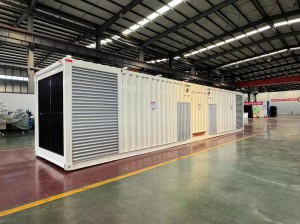Gas generators have many advantages, such as high efficiency, environmental protection, reliability, etc., and are widely used in many fields. Firstly, gas generators have high efficiency. It can use clean energy such as natural gas or liquefied petroleum gas to convert the heat generated by the combustion of these fuels into electrical energy, with a high conversion efficiency of generally over 30%, and even up to around 50%. Secondly, gas generators are environmentally friendly. Due to its use of clean energy such as natural gas or liquefied petroleum gas, it does not produce a large amount of carbon dioxide and other harmful gases during the combustion process, with minimal impact on the environment. Once again, gas generators have reliability. It adopts advanced gas engine technology, which can operate stably for a long time and provide reliable power supply. In addition, gas generators also have advantages such as low maintenance costs and long service life.
Risk identification and mitigation measures for natural gas generators:
Unexpected start: Before repairing the generator set, disconnect the battery cable. When disconnecting the battery, first disconnect the negative wire (-), and then connect the negative wire last when connecting the battery again. Before repairing the generator set or connected equipment, the generator set should be powered off
Battery acid leakage: When charging or handling, be sure to wear protective goggles and rubber gloves. Do not open a closed battery or damage the battery casing. If the electrolyte splashes into the eyes or onto the skin, immediately rinse the affected area with plenty of water for 15 minutes. If it splashes into the eyes, seek medical help immediately. Do not add acid to the battery in use as it may cause electrolyte splashing.
Battery gas: Do not generate sparks near the battery at any time, especially during charging; Do not handle the battery during a fire. To prevent explosion, combustion, and sparks, do not use tools or other metal objects to come into contact with the battery electrodes; Remove all metal accessories before repairing the equipment; Before touching the battery, discharge static electricity from your body; Do not touch the battery charger connection during charging, and turn off the battery charger before disconnecting the battery connection; The battery storage area should be ventilated to prevent the accumulation of combustible gases.
Battery short circuit: Before maintenance of the generator set, disconnect the battery. Before repairing the equipment, remove all metal accessories and use tools with insulated handles. When disconnecting the battery, first disconnect the negative wire. When connecting the battery again, do not connect the positive and negative poles of the battery to the positive and negative poles of the starter electromagnetic coil in a wrong position. Do not use terminal short circuits to test the condition of the battery.
Engine backfire or flash: Do not generate sparks in carburetors, fuel pipes, fuel filters, or other places where fuel or fuel vapor may overflow; Do not start the generator set after removing the air filter.
Exhaust system: working near or in maintenance of the generator set
Dangerous voltage/electric shock: Before opening the casing, all power sources should be cut off, and the generator set should be operated after installing all protective devices and electrical enclosures; Do not touch wires or electrical appliances when the ground of the generator room is damp; To avoid inhaling exhaust gas, it must be safely discharged outdoors through pipes. (CO can cause serious injury)
High body temperature: Before opening the radiator pressure cap, the engine needs to be stopped; The standby body should be completely cooled and confirmed before maintenance can be carried out. During engine operation, perform corresponding inspections to prevent burns.
Post time: Nov-03-2023

